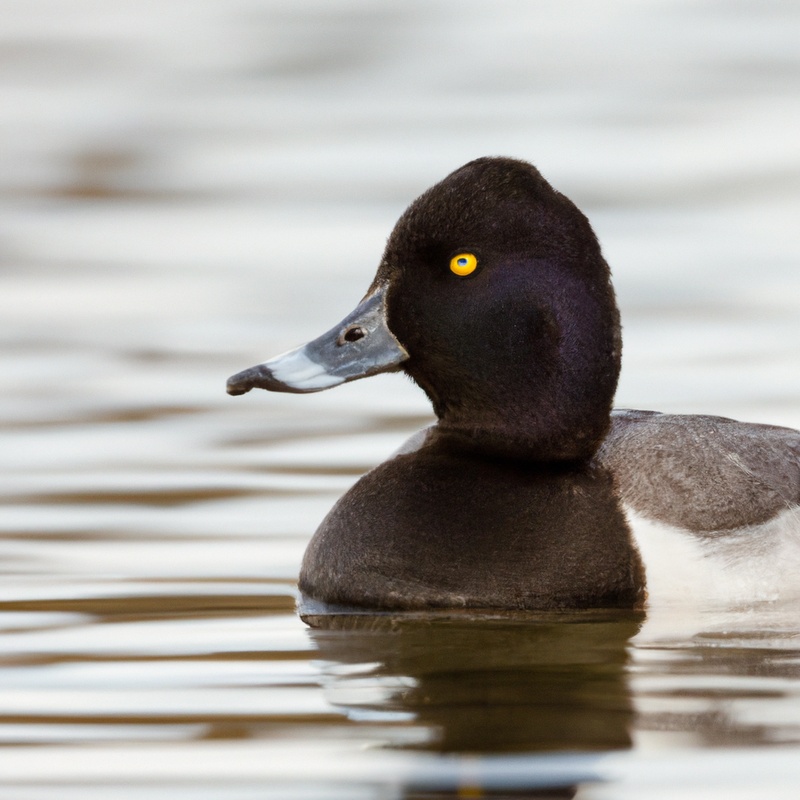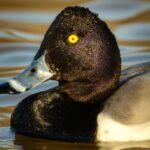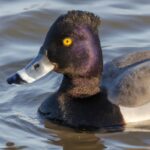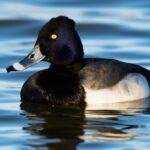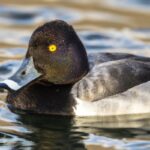Key Takeaways:
- Scaup hunting is a popular activity in Alaska, popular among locals and visitors alike.
- Successful scaup hunting requires knowledge of their habitat, behavior, and appropriate hunting techniques.
- Hunting regulations and permits are necessary for a legal and responsible hunting experience.
- Scaup hunting provides important economic and social benefits to local communities in Alaska.
Are you ready for an epic hunting adventure in the breathtaking wilderness of Alaska? If so, then grab your shotgun and gear up for some exhilarating scaup hunting! As an expert in Alaskan hunting regulations and techniques, I’m here to guide you through the ins and outs of this thrilling sport.
In this blog, we’ll explore everything from understanding Alaska’s hunting regulations to the best time and locations for scaup hunting.
I’ll also share valuable tips on gear and equipment, techniques and strategies, as well as cleaning and cooking these delicious waterfowl. So, let’s dive in and embark on an unforgettable Alaskan hunting experience together!
Topic | Hunting Scaup in Alaska |
Species | Scaup |
Location | Alaska |
Season | Fall and Winter |
Legal Limit | 2 per day |
License Required | Yes |
Method | Shotguns |
Hunting Dates | September to January |
Bag Limit | 4 possession limit |
Permit Required | Yes |
Hunting Regulations and Licensing
Understanding Alaska’s Hunting Regulations
Understanding Alaska’s Hunting Regulations can be a bit overwhelming, but it’s important for hunters to be well-informed.
Here are some key points to keep in mind:
- Licensing: Before heading out, make sure you have the necessary hunting license. Alaska requires both residents and non-residents to obtain a license, which can vary depending on the type of game you plan to hunt.
- Bag Limits: Each species has its own bag limits, which indicate the number of animals you can legally harvest. It’s crucial to know these limits to ensure you stay within the law.
- Season Dates: Alaska has specific hunting seasons for different game species, and these dates can change from year to year. Check the Alaska Department of Fish and Game’s website for the most up-to-date information on season dates.
- Transportation and Tagging: When transporting harvested game, be sure to follow the regulations for tagging and proper documentation. This helps ensure compliance and the sustainability of the wildlife population.
- Game Management Units: Alaska is divided into different Game Management Units (GMUs that have their own specific regulations. It’s essential to know the regulations for the specific GMU you plan to hunt in.
- Restricted Areas: Some areas in Alaska are designated as restricted, meaning hunting is prohibited or has specific restrictions. This can include national parks, wildlife refuges, or private lands. Always respect these boundaries and hunt only in permitted areas.
Remember, it’s your responsibility as a hunter to understand and follow Alaska’s hunting regulations.
Ignorance of the regulations is not an excuse, so take the time to familiarize yourself with the rules before embarking on your hunting adventure.
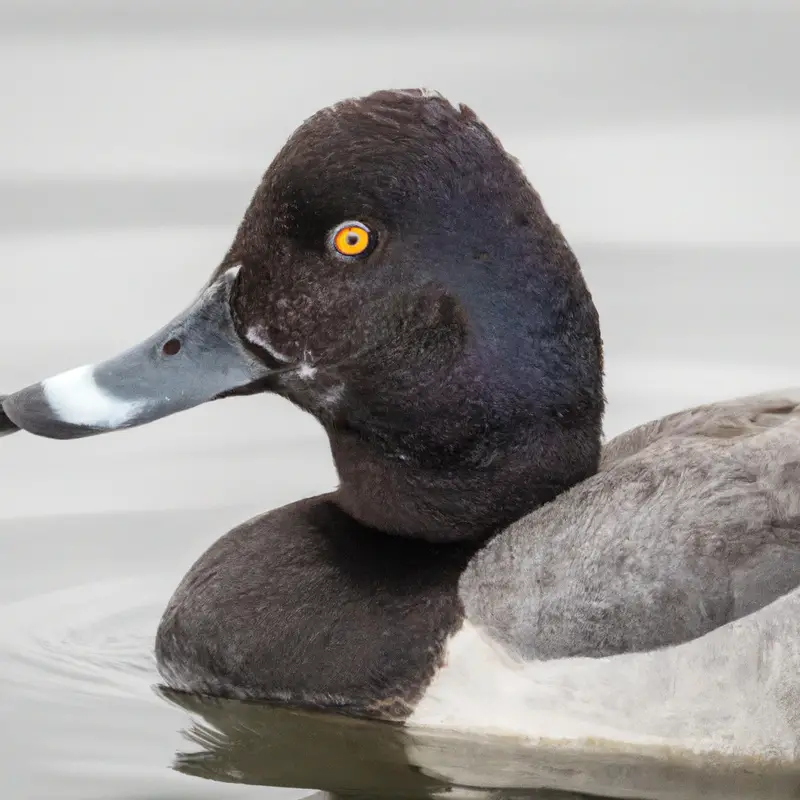
Obtaining the Necessary Licenses and Permits
To legally hunt scaup in Alaska, you will need to obtain the necessary licenses and permits. Here’s what you need to do:
- Alaska Hunting License: Purchase an Alaska hunting license, which is available for residents and non-residents. You can buy it online or at authorized vendors.
- Waterfowl Conservation Stamp: Get a federal waterfowl conservation stamp, also known as a duck stamp. This stamp validates your license for hunting waterfowl, such as scaup. You can purchase it online or from designated locations.
- Migratory Bird Hunting Permit: Obtain a federal migratory bird hunting permit, which allows you to hunt migratory birds, including scaup. You can acquire it online through the U.S. Fish and Wildlife Service website.
- State Duck Stamp: Depending on the specific regulations in Alaska, you may also need a state duck stamp. Check with the Alaska Department of Fish and Game for any additional requirements.
Remember, it’s essential to review the official regulations and requirements from the relevant authorities to ensure compliance and have a successful and legal hunting experience. Happy hunting!
Best Time and Locations for Scaup Hunting
Scaup Migration Patterns in Alaska
Scaup migration patterns in Alaska are influenced by the changing seasons and the availability of food sources. During the winter months, scaup can be found in coastal areas and larger bodies of water, such as bays and estuaries.
As spring approaches, they begin their migration to their breeding grounds in the northern regions of Alaska.
These breeding grounds are typically located near freshwater lakes and marshes. In the fall, scaup migrate south once again, returning to their wintering areas.
It is important to note that the exact timing and routes of their migration can vary from year to year.
Top Locations for Scaup Hunting in Alaska
If you’re looking for the top locations for scaup hunting in Alaska, you’re in luck! Here are some of the best spots to consider:
- Kodiak Island: Known for its abundant waterfowl population, Kodiak Island offers a great hunting experience for scaup. With its diverse wetlands and coastal areas, you’ll have plenty of opportunities to bag some scaup here.
- Yukon Delta National Wildlife Refuge: This expansive refuge in western Alaska is a haven for waterfowl, including scaup. It’s a remote and untouched area, providing a unique and rewarding hunting experience.
- Kenai Peninsula: The Kenai Peninsula is home to numerous lakes and rivers, making it a prime location for hunting scaup. With its stunning landscapes and diverse waterways, you’ll have a memorable hunting trip here.
- Copper River Delta: Another excellent spot for scaup hunting, the Copper River Delta offers a mix of marshes, lakes, and rivers. It’s a popular destination for waterfowl enthusiasts, and scaup can often be found here in good numbers.
Remember, always check the local regulations and obtain the necessary licenses before hunting in Alaska. Good luck and happy hunting!
Essential Gear and Equipment for Scaup Hunting
Choosing the Right Shotgun and Ammunition
When choosing a shotgun for scaup hunting, it’s important to consider a few key factors. First, opt for a shotgun with a 12-gauge or 20-gauge chamber, as these are commonly used for waterfowl hunting.
Look for a shotgun that is durable and reliable, since you’ll be exposed to harsh conditions in Alaska.
As for ammunition, select steel or non-toxic shot in sizes 2 or 4, as these are effective for scaup hunting. Make sure to check the local regulations for any specific requirements or restrictions on ammunition.

Decoys and Calls for Scaup Hunting
When it comes to scaup hunting, decoys and calls are essential gear for attracting the ducks.
Decoys mimic the appearance of scaup on the water, while calls imitate their vocalizations.
Using a variety of decoys can simulate a natural and enticing scene for the ducks.
It’s important to set them up in a way that mimics a flock of feeding scaup, including both drakes and hens.
As for calls, a quality scaup call can help you replicate the sounds of these ducks, such as their feeding calls or comeback calls.
Practice using the calls to create realistic sounds that will attract scaup to your hunting area.
Remember to strategically place decoys and use calls sparingly to create an effective and realistic presentation.
This will increase your chances of a successful scaup hunting experience.

Clothing and Accessories for Scaup Hunting in Alaska
When preparing for scaup hunting in Alaska, it’s important to have the right clothing and accessories. Here are some essentials you should consider:
- Insulated Waterproof Gear: Alaska’s weather can be harsh, so dress in layers with waterproof and insulated clothing to stay warm and dry.
- Camouflage: Scaup are wary birds, so wearing camouflage clothing that matches the marsh or coastal environment can help you blend in and increase your chances of success.
- Neoprene Waders or Chest High Waders: Since you’ll be hunting in wet environments, investing in waders is a must. Neoprene waders offer insulation in colder temperatures, while chest-high waders provide additional protection.
- Waterproof Gloves: Your hands will likely get wet and cold, so waterproof gloves can protect and keep them comfortable during the hunt.
- Face Mask and Hat: A camo face mask and hat can help conceal your face from the birds and the cold wind, allowing you to stay focused and comfortable.
- Binoculars: Binoculars are essential for spotting scaup in the distance, helping you locate potential hunting areas and identify targets.
Remember, these are just the basics. Adapt your gear depending on the specific conditions of your hunting area and always prioritize safety.
Now, go out there and have a great scaup hunting adventure in Alaska!
Techniques and Strategies for Scaup Hunting
Concealment and Blind Placement
Concealment and blind placement are key factors in successful scaup hunting.
To effectively hide from these birds, find natural cover like reeds or bushes along the water’s edge.
Set up your decoys in an area with tall grass or vegetation to blend in seamlessly.
Position your blind downwind from the birds’ usual flight path, allowing for a clear line of sight while staying hidden.
Remember to adjust your blind according to the changing wind direction for optimal concealment.
Stay quiet and still, as any movement can spook the scaup.
Effective Decoy Spreads for Scaup Hunting
When it comes to scaup hunting, setting up an effective decoy spread is crucial.
Here are a few tips to help you lure in those scaup:
- Start with a large number of decoys, at least two to three dozen.
- Place the decoys in small groups or rafts, mimicking natural scaup behavior.
- Mix up the decoy placement with some floating low in the water and others riding higher.
- Use motion decoys, such as spinning wings, to add realism and attract attention.
- Experiment with different configurations and patterns to find what works best in your specific hunting area.
- Consider using a jerk rig or paddlewheel to create movement in your decoy spread.
Proper Calling Techniques for Scaup Hunting
When it comes to scaup hunting, proper calling techniques are essential for success. Here are some tips to improve your calling game:
- Master the basics: Start by learning the key vocalizations of scaup, such as their feeding, greeting, and comeback calls. Practice these sounds to perfection.
- Use realistic calls: Invest in a quality scaup call that accurately mimics the sound of live birds. Avoid using overly loud or exaggerated calls that might spook the birds.
- Call sparingly: In the early season, scaup are often more responsive to calling. However, as the season progresses and the birds become more wary, it’s best to use calls sparingly to avoid alerting them to your presence.
- Pay attention to timing: Timing is crucial when it comes to calling scaup. Listen for other birds in the area, and try to match your calling to their rhythms. This will make your calls sound more natural and increase your chances of attracting birds.
- Be patient: Scaup can be unpredictable, and sometimes they may not respond to your calls right away. Don’t get discouraged. Keep trying different calling sequences and be patient. Sometimes it just takes a little persistence to bring them in.
Remember, every hunting situation is unique, so don’t be afraid to experiment with different calling techniques. With practice and experience, you’ll become more proficient at calling in these elusive waterfowl.
Happy hunting!
Cleaning and Cooking Scaup
Field Dressing and Cleaning Scaup
Field dressing and cleaning scaup is a straightforward process. Start by removing the feathers from the bird’s breast and thighs.
Then, make a small incision near the breastbone and carefully remove the internal organs.
Rinse the cavity thoroughly with cold water. Next, remove the head and wings.
Lastly, rinse the bird again and pat it dry before cooking or freezing.
Make sure to follow proper hygiene practices and dispose of the offal properly. Happy hunting!
Delicious Recipes for Cooking Scaup
Cooking Scaup can be a delicious and flavorful experience.
Here are a few recipes to try when preparing this waterfowl:
- Pan-Seared Scaup Breast: Heat some butter or oil in a pan over medium-high heat. Season the breast with salt and pepper, then sear it on both sides until browned and cooked to your liking. Serve with a side of roasted vegetables or a fresh salad.
- Scaup Confit: Rub the breasts with a mixture of salt, pepper, and herbs (such as thyme or rosemary. Place them in a dish and cover with melted duck fat or oil. Cook in a low oven (around 275°F/135°C) for a few hours until tender. Serve with mashed potatoes or crusty bread.
- Scaup and Wild Rice Soup: Slow-cook diced scaup meat along with wild rice, vegetables (such as carrots, celery, and onions, and herbs in a flavorful broth. Simmer until the rice is tender and the flavors have melded together. Serve with a sprinkle of fresh parsley.
- Scaup Kabobs: Cut the breast meat into bite-sized pieces and marinate them in a mixture of your choice (such as soy sauce, honey, and garlic for a few hours. Thread the meat onto skewers, alternating with vegetables like bell peppers and onions. Grill or broil until cooked through and slightly charred.
Remember to always remove any shot pellets and any fat before cooking your scaup.
Enjoy exploring these recipes to savor the unique taste of this waterfowl!
Frequently Asked Questions (FAQs)
What is the bag limit for scaup hunting in Alaska?
The bag limit for scaup hunting in Alaska is currently 2 scaup per day.
However, there is a possession limit of 6 scaup.
It’s important to keep track of the number of scaup you have harvested to stay within the legal limit.
Be sure to check the specific regulations in the area where you plan to hunt, as bag limits can vary.
Following these regulations helps protect the scaup population and ensures sustainable hunting practices.
What are the differences between lesser and greater scaup?
The primary difference between lesser and greater scaup is their size.
Greater scaup are larger, with males averaging around 20 inches in length and lesser scaup averaging around 17 inches.
The plumage also differs slightly, with greater scaup having a rounder head and more pronounced greenish-purple sheen on their heads, while lesser scaup have a peaked head and a more bluish-purple sheen.
Additionally, lesser scaup tend to have grayer flanks compared to the whiter flanks of greater scaup.
These differences can be helpful in identifying the two species while hunting or birdwatching.
Are there any restrictions on scaup hunting methods in Alaska?
In Alaska, there are restrictions on scaup hunting methods. You are not allowed to use electronic calls or devices to attract scaup.
The use of bait, traps, and nets is also prohibited.
Additionally, there are restrictions on the number of scaup you can harvest per day and possession limits. It’s important to familiarize yourself with the specific regulations outlined by the Alaska Department of Fish and Game before you go hunting.
Always ensure you are hunting within the legal boundaries to protect the scaup population and preserve the hunting experience for future generations.
Can non-residents go scaup hunting in Alaska?
Yes, non-residents are allowed to go scaup hunting in Alaska. However, there are certain regulations and requirements that need to be followed.
Non-residents must obtain a hunting license and a migratory bird stamp before they can go hunting.
It is also important to familiarize yourself with bag limits and any additional restrictions that might be in place. Additionally, it is recommended to hire a local guide or do thorough research to ensure that you are hunting in areas that are open to non-residents.
Happy hunting!
Final Verdict
Hunting scaup in Alaska offers an incredible experience for avid waterfowl hunters.
By understanding Alaska’s hunting regulations and obtaining the necessary licenses and permits, hunters can enjoy a rewarding and legal hunting excursion.
The best time and locations for scaup hunting coincide with the birds’ migration patterns, and hunters can maximize their chances by using the right gear and equipment, employing effective techniques and strategies, and properly cleaning and cooking their harvested scaup.
Whether you’re a resident or non-resident, Alaska’s abundant scaup population and breathtaking landscapes make it a prime destination for memorable hunting adventures.
